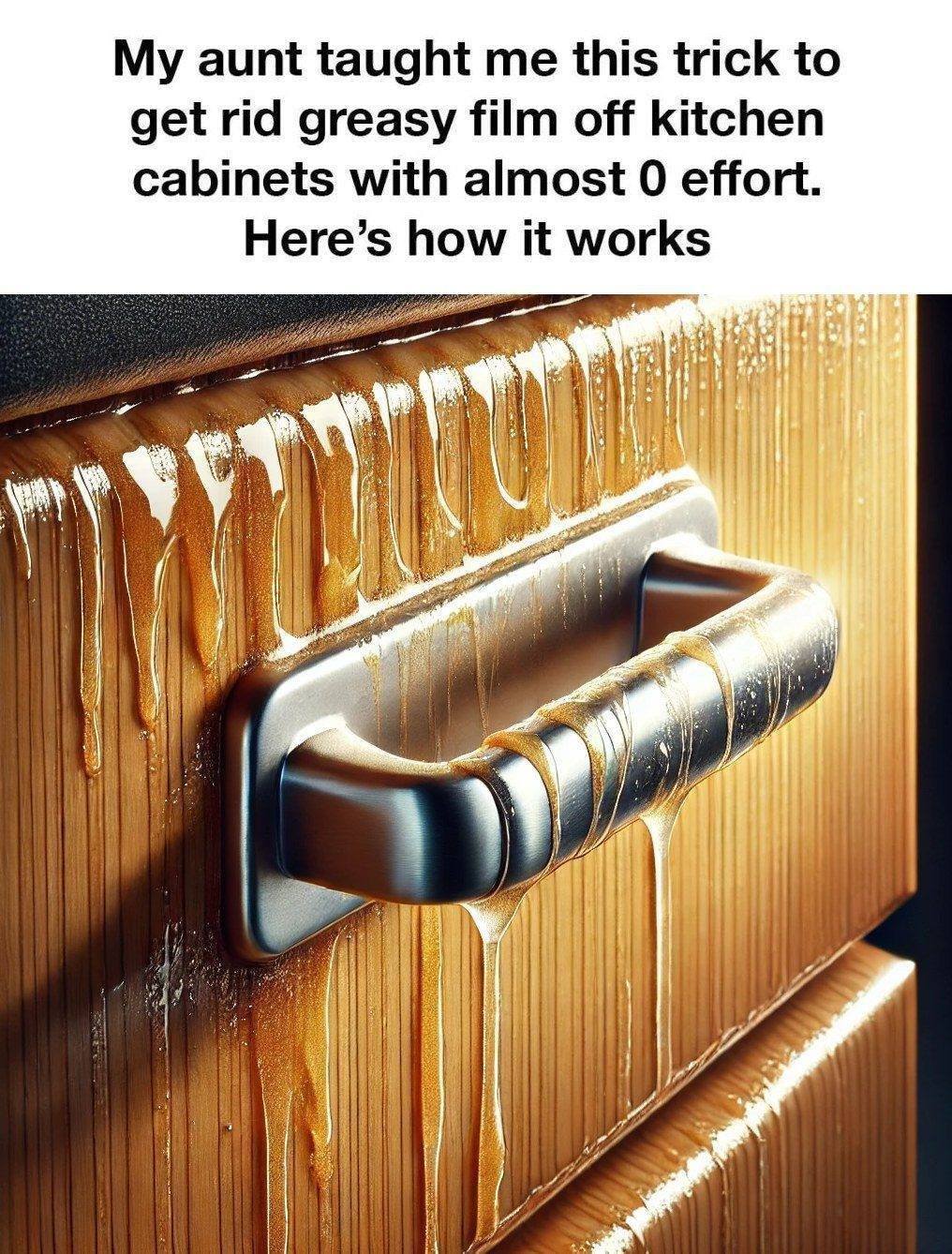Rinse and Repeat (If Necessary): If any grease remains, repeat the process until your cabinets are completely clean. One application is usually sufficient, but particularly stubborn grime may require a second round.
Final Rinse and Dry: Once all grease is removed, wipe down the cabinets with another clean cloth dampened with warm water to eliminate any remaining residue. Finally, dry the surface with a dry cloth to prevent water spots.
Additional Tips for Keeping Cabinets Grease-Free
Regular Cleaning: To avoid grease buildup, make it a habit to wipe down your cabinets with a damp cloth after cooking. This routine maintenance will help keep them clean and reduce the need for deep cleaning.
Use a Grease Filter: If you often fry or cook at high heat, consider using a grease filter in your kitchen. These filters can help catch airborne grease particles before they settle on your cabinets.
Avoid Harsh Chemicals: Stick to natural cleaning solutions like the baking soda and vegetable oil mixture or other gentle cleaners. Harsh chemicals can damage your cabinets’ finish and pose health risks.
Consider Cabinet Material: Different cabinet materials may require different care. For example, wooden cabinets might benefit from a gentle wood cleaner or polish after using the baking soda and oil method.
My aunt’s trick of using baking soda and vegetable oil to clean greasy kitchen cabinets is truly a game-changer. It’s not only incredibly effective but also requires minimal effort and uses ingredients you likely have in your pantry. The next time you notice a greasy film on your cabinets, skip the harsh chemicals and give this simple solution a try. You’ll be amazed at how easily you can restore your cabinets to their original glory!

